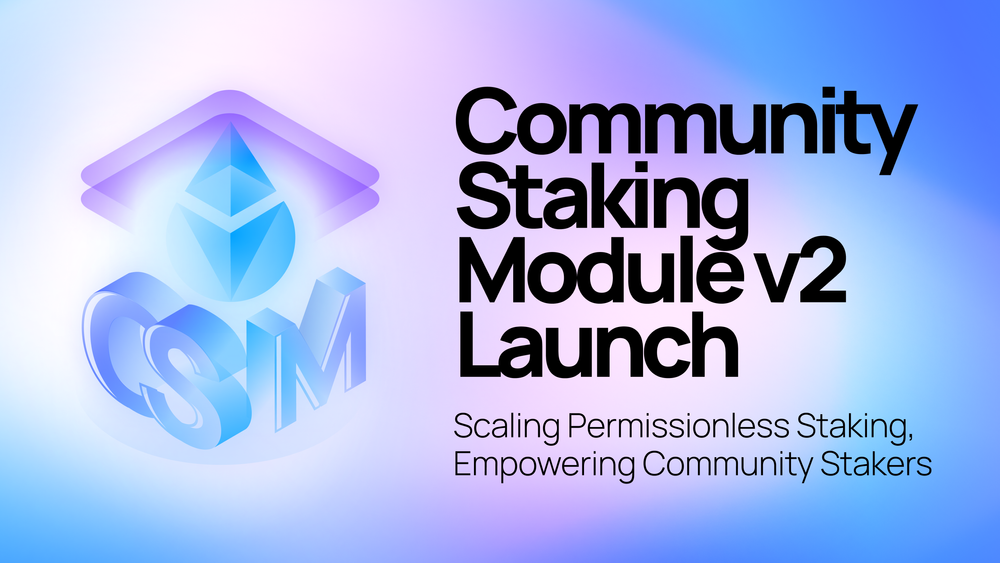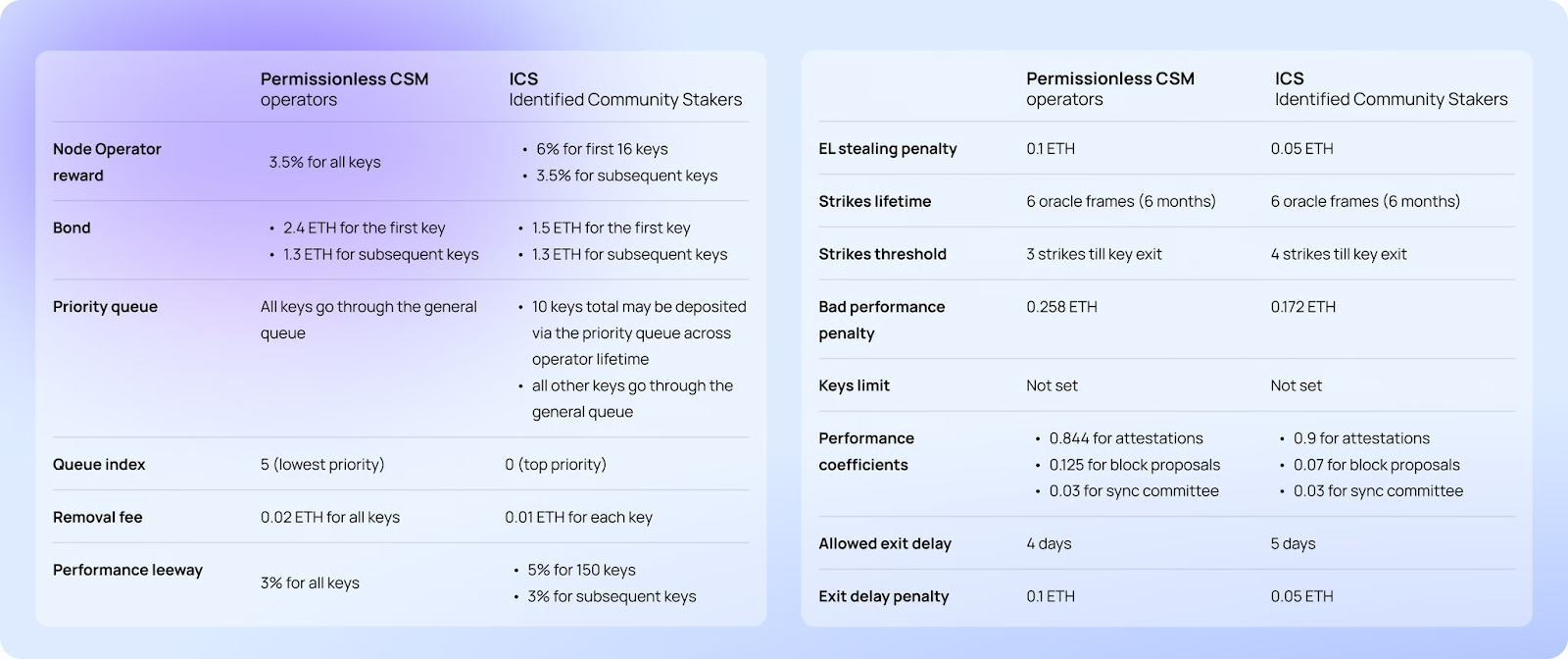Community Staking Module v2 Launch: Scaling Permissionless Staking, Empowering Community Stakers

The Community Staking Module (CSM) launched in October 2024 with the goal of making it easier for solo stakers to contribute to Ethereum’s security. Over the past 12 months, demand has outpaced supply. To further meet this demand, the CSM v2 expands the permissionless staking portion of the Lido protocol core pool from 3% to 5%, with a planned increase to 10% by late 2025 or early 2026.
Beyond the higher permissionless staking limit, the CSM v2 introduces the Identified Community Stakers (ICS) framework, a novel approach to ensure that Community Stakers get the full benefits of the module.
TLDR
- Live now: The CSM v2 is available at csm.lido.fi.
- ICS Incentives: Apply to become an Identified Community Staker to access improved terms (boosted rewards, lower bond requirements, and prioritized access).
- Bigger share: The Lido protocol’s permissionless staking share limit is now 5%, up from 3%.
- Path to 10%: DAO tokenholders approved a potential increase to 10% by late 2025 or early 2026, subject to conditions.
The CSM v2 Feature Set
The CSM v2 focuses on two key goals: scaling the permissionless staking portion to 10% of protocol stake, and expanding meaningful participation for Community Stakers. This is accomplished through four key new features:
- Entry Gates: Customizable entry pathways for Node Operators
- Identified Community Stakers: Targeted incentives to increase solo staker participation
- Strikes System: Permissionless ejection of underperforming validators
- EIP-7002 Integration: Enablement of Execution Layer Triggerable Withdrawals
Entry Gates
Entry Gates create tailored entry pathways for Node Operators, enabling operator-specific features, such as unique reward shares or bond requirements. Any team or contributor can propose and develop an Entry Gate to serve Community Stakers according to specific goals.
At launch, three Entry Gate contracts are included: Permissionless Operator, Identified Community Staker, and Legacy Early Adoption. Each contract maps to a Node Operator type with differentiated parameters.
Identified Community Stakers
Through the ICS Entry Gate, the CSM can provide targeted incentives to increase independent staker participation, rather than granting the same benefits to all operators. This approach helps enfranchise Community Stakers while reducing the likelihood that these benefits will be scooped up by large or professional operators.
The ICS designation offers enhanced parameters compared with permissionless operators, including:
- Increased rewards for the first active 16 keys, potentially delivering up to 2.36x greater capital efficiency compared than vanilla solo staking
- A reduced bond requirement of 1.5 ETH (down from 2.4 ETH) for the first key
- Deposit priority for an operator’s first 10 keys (over the lifetime of an operator)
- Broader acceptable validator performance
NOTE: the CSM v2 currently supports 0x01 withdrawal credentials, so references to “keys” imply 32-ETH validators.
Refer to the additional enhanced parameters listed below.

Operators can apply for ICS via the CSM widget. To qualify, applicants must provide proofs across three categories (i.e. Experience, Engagement, and Humanity) to verify themselves as individuals. Read the ICS blog post to dive deeper.
Strikes System & EIP-7002 Integration
To boost the resilience and security of the module, an upgrade to the Lido protocol is shipping alongside CSM v2, integrating EIP-7002 (Execution Layer Triggerable Withdrawals) into the protocol. This integration improves fault tolerance and reduces trust assumptions by allowing the protocol to initiate validator exits via the Execution Layer with its withdrawal credentials, in cases such as voluntary operator requests or forced ejections of systemic underperformers.
Building on this, the Strikes system introduced in the CSM v2 allows for the permissionless ejection of validators that consistently underperform, protecting protocol health and maintaining overall validator performance and APR.
Toward a More Decentralized Ethereum
With the release of the CSM v2, Community Stakers are poised to take on an even larger role in the Lido protocol, enabling the scaling of permissionless participation in the Lido protocol and further diversifying the Node Operator set.
Next Steps
- Explore CSM: csm.lido.fi
- Apply to become an Identified Community Staker → CSM widget
- Start home staking with the CSM → follow the Setup Guide
- Contribute to a more secure, decentralized Ethereum through the Lido protocol
Happy home staking.